One for All All for One
All pictures by Peter Tijhuis courtesy Galerie Gabriel Rolt One for All All for One, As the title already suggests, resting on the dichotomy between singular and multiple. Aukje Dekker reflects upon her role as an artist and the meaning of her own work. Dekker chose to articulate her solo exhibition around collaborations. All the exhibited works are the result of practical or conceptual collaboration between Dekker and other artists: some of them actively participating in the making process, some other only alerted of their ‘contribution. The apparent strangeness of this artistic choice is in reality the core of the whole exhibition: Dekker’s aim is namely to question the artistic system IN TOTO, starting from raising questions about aspects like authorship and authenticity. If the conceptual or practical production of exhibited works is actually shared with other artists, where lies the authorship of them? Within the process of working together, does the authorship of the works still belong to one of the parties involved or does it shift towards an in-between space of shared creation? Those are only some of the questions which shaped the ideological background of the show: the role of Aukje Dekker herself is also a central point of discussion. Her ‘definition’ within the context of the exhibition can in fact oscillate from the one of ‘artist’, to the one of ‘regisseur’ or simply ‘curator’, those also being applicable terms. The discussion around her own role in the exhibition and the critical way of getting along with institutionalised terms, functions and concepts so typical of the art world is the precise aim of the artist. The questions she, as an artist, asks herself everyday are now thrown into our faces, we found ourselves confronted with them and are smartly obliged to actively think about the very structure of the contemporary art world and its industry. This attempt has to be interpreted, however, not merely as a critique, but also as an inspirational trigger: the exhibited works are the witnesses of a creative energy, representing the result of a long making process. The time of the actual collaboration finds place, above all, IN the process of making: the final artworks are labeled, they find a place within the context and the space of the gallery, they become autonomous things, objects of questions and discussion. The true collaboration, then, is finished: only the making process is the moment when the complex net of brain storming, experiment and conversation takes place, where the true collaboration, in its real meaning, happens. The fact that some of the artists do not even know what Dekker has done with their works is another interesting factor, symbolising the absurdity of the definition of ‘collaboration’ itself, and the subtle danger which comes along with appropriation. The name and notoriety of some of the artists Dekker chose to collaborate with is yet another conceptual trigger: their present or absent notoriety would, for instance, condition the final price of the work. But how does it work if they did not really participate? and is this still possible if the works are officially categorised as ‘Aukje Dekker’s”? The artist’s ideological play can be seen the clearest, maybe, in the work Signatures Series, made in collaboration with artist- master falsifier Geert Jan Jansen. The work consists of a series of famous artists’ signatures, from Picasso to Chagall, reproduced by Jansen as similar as possible to their originals. The idea itself of employing a master falsifier perfectly embodies the ideological structure of the show: the core of the work consists in its provoking attitude towards authenticity, the idea of appropriation, reproduction and market, together with the ever-present problematic of Dekker’s own ‘role’ within the collaboration. The context of an art gallery is, finally, a last element to take in consideration. The commercial character of a place like an art gallery is rooted in the universal values of authorship, authenticity and market. By choosing to work around the concept of collaborations, Dekker inevitably destabilises the strict criteria upon which the structure of a gallery is built. The willingness of an art gallery to re-invent its own dogmas and to open its doors to experiment is another element of reflection, prompting interesting questions regarding the function and relevance of an art gallery in the continuously evolving values of the contemporary art world. One for All All for One is, thus, not only a unique investigation towards the identity of the art scene, but it represents also the journey of Dekker herself, from personal engagement and relationships to the building up of a conceptual whole, a construction which, with all controversies, will carry her name. Aukje Dekker: One for All All for One -in samenwerking met Janine van Oene, Kristian de la Riva, Paul Blanca, Anne Jan Reijn, Sieto Noordhoorn, Waynehorse, Caroline Ruijgrok, Dim Balsem, Geert Jan Jansen, Steve McQueen, Juliaan Andeweg, Bas Jan Ader, Buster Keaton, Pieter Dekker, Marija Danilovic, Keez Duyves, Yves Klein, Marijn Ottenhof, Marco Reekers, Arjen Ottema, Jake Chapman, Thomas van Linge, Grayson Perry. |  |  |  overview One for All All for One Galerie Gabriel Rolt |  overview One for All All for One Galerie Gabriel Rolt |  I+I= I&I ism met Caroline Ruijgrok |  Snooker cues for Ronnie the Rocket ism Kristian de la Riva. Wood, marble, gold, and glass 2017 |  Snooker cues for Ronnie the Rocket ism Kristian de la Riva. Wood, marble, gold, and glass 2017 |  for Ronnie the Rocket with Kristian de la Riva wood, marble gold |  for Ronnie the Rocket with Kristian de la Riva |  Yves Klein Two ism Janine van Oene 2017 |  Yves Klein Two ism Janine van Oene 2017 |  |  |

Life is Ride, 2023

SEXYLAND WORLD

De KIP, 2023

Oculus Cirrus

Sea by Night, 2023

Buzzclub SEXYLAND 2022

Moonriders
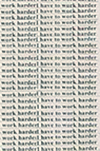
Work harder

Frans Hals Museum
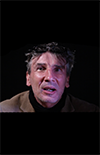
Tell Me

SEXYLAND
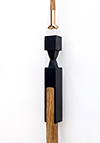
One for All All for One
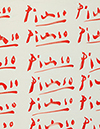
Signature Series

De Zee

DEAD PAN

In search of the miraculous

STICK OR TWIST

Part 2. Copy a feeling

Part 1. What about value
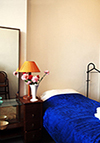
Part 3. Gallery as Hotel

Ulay (s)he

Feest der Vernietiging
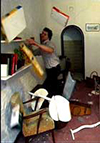
Chambre dHote
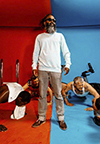
Pitch Black Photo Booth
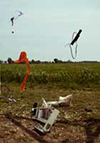
When the Saints Video
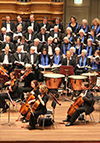
one for all
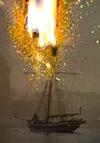
Spoilt Dissatisfaction

Puking Rainbows

Dancemarathon

Push Versus Pull

COCO CHANEL TIGER
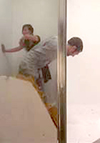
VIDEO N2O
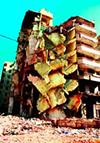
Cutting Daisy
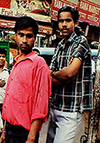
VIDEO 112
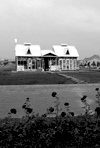
RANDOM PHOTOGRAPHY

Flourish in absence

Eddie The Eagle Museum

ARCHIVE
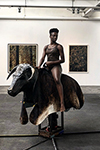
De Stier

Buzz Club

Blue 2